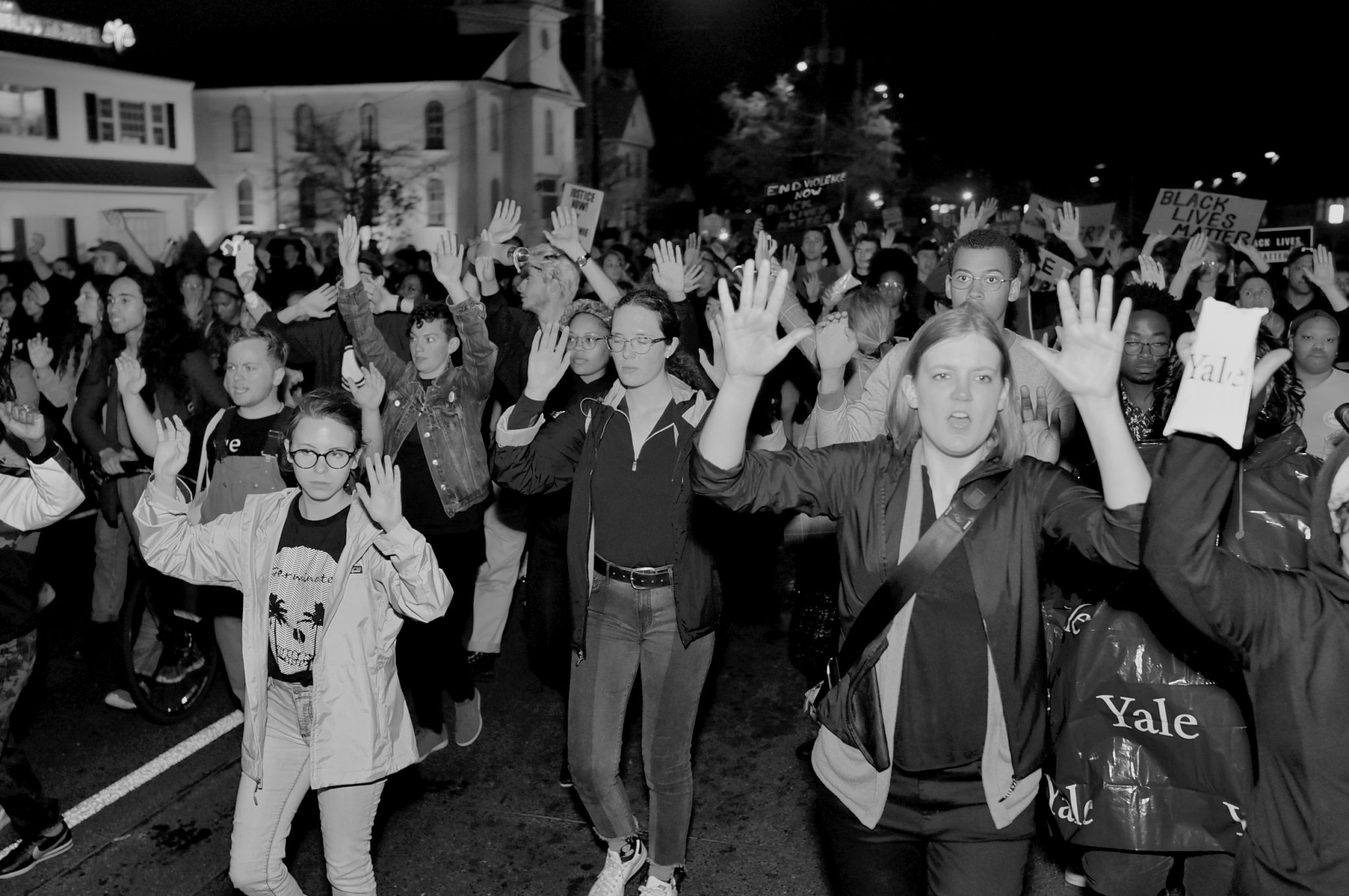
In April of last year, a Yale police officer and a Hamden police officer opened fire on two unarmed black New Haven residents. The couple, Paul Witherspoon and Stephanie Washington, were driving on the New Haven side of the Hamden-New Haven border when HPD officer Devin Eaton and YPD officer Terrance Pollock fired 16 total shots at the couple. Washington survived a gunshot wound to her upper thigh, while Witherspoon was not hit. The officers-involved shooting sparked protests throughout Hamden and the Elm City for months to follow, raising questions about police jurisdiction and accountability.
“It is imperative that both officers be held accountable … for their rampageous shooting of Stephanie Washington and Paul Witherspoon,” Kerry Ellington, a People Against Police Brutality community organizer, told the News at a protest in October. “We stand here today as an organized community … demanding justice for Stephanie and Paul.”
Last year on April 16, the day of the shooting, around 200 Yale students and community activists gathered outside the Hamden Police Department to hold a demonstration. Later that night, they brought their protest to the site of the shooting––Newhallville, a New Haven suburb. Major thoroughfare streets were shut down due to the protests. Within a week, University and city activists had rallied outside President Peter Salovey’s house and outside Woodbridge Hall. And at Yale, organizers and students met in the Afro-American Cultural Center to plan further actions and form the coalition Black Students for Disarmament at Yale.
Among BSDY’s key demands were the disarmament of the YPD, the restriction of the YPD’s patrol area and the immediate termination of both Eaton and Pollock. Salovey wrote in a University-wide email on April 17 that Pollock had been placed on paid administrative leave, and that Yale would wait to conduct an investigation until state officials had completed theirs. Eaton, with the HPD, was also placed on paid administrative leave.
In April, Washington and Witherspoon were traveling in a Honda Civic near Dixwell Avenue when Eaton stopped their car, following a 911 call reporting an armed robbery at a Hamden Gas n’ Go station. Video footage released later shows Witherspoon starting to exit the vehicle and raise his hands when Eaton began firing towards him. An investigation by the state confirmed that Pollock exited his patrol car and fired three shots at the Honda Civic after his own car was struck by a stray bullet fired by Eaton.
Investigations into the shooting spanned months over the summer, as investigators sifted through video footage and encountered challenges such as body cameras that had remained off during the shooting.
In October, the state released a report charging Eaton with one count of assault and two counts of reckless endangerment. The report cleared Pollock of criminal charges, as State’s Attorney Patrick Griffin described his actions as “justified” and “objectively reasonable.”
Griffin’s report led to another wave of protests. Almost 100 Elm City residents, Yalies and Hamdeners gathered on the Broadway island in downtown New Haven to repeat calls for firing the two officers. Activist groups — including Hamden Action Now, Black Lives Matter New Haven and BDSY — claimed that the shooting was not an isolated incident but a pattern of police violence against communities of color.
“Regardless of the outcome of this one case, true police accountability still does not exist in Connecticut,” David McGuire, executive director of ACLU-CT, said in November.
Also in response to the report, around 100 students and activists flocked to the Hamden Police Commission meeting in November to demand an internal investigation into Eaton’s actions. One week later, Hamden police chief John Cappiello recommended firing Eaton –– a move that activists attributed to their continued pressure on the commission. Soon after, however, the New Haven Superior Court granted an injunction requested by the police union, which prevented the police commission from changing Eaton’s employment status until his criminal case is resolved.
In December, the University announced that Pollock would shift to a desk duty position within the force, without a gun or uniform. The University has also partnered with 21CP Solutions — an independent organization that “helps law enforcement agencies and communities effectively tackle the challenges of policing in the 21st century,” according to its website — to conduct a review of Yale’s police practices.
“Chief Higgins and I are working closely with our Yale police officers to ensure that we emerge as a more effective police department as a result of this self-study,” said Janet Lindner, University vice president for human resources and administration, in a December statement.
While BSDY said they were encouraged by the disciplinary action against Pollock, they voiced frustration at the amount of organizing it took for the administration to respond. Activists also expressed skepticism over the efficacy of 21CP in creating meaningful changes in police practices, and BSDY added to its demands a request that Yale release the 21CP report to the public.
Beyond the April shooting, Yale students have continued to collaborate with a network of community activists. BSDY has protested and released statements about other racial justice issues, such as the police shooting of New Haven resident Mubarak Soulemane and decarceration during the COVID-19 pandemic.
As of May, Eaton’s criminal case is still ongoing, and he remains on unpaid administrative leave.
Ella Goldblum | ella.goldblum@yale.edu






